BRANDT iHammer’s MegAleX is a university tested foliar applied formulation that helps create deep, robust root systems that tap water and nutrients beneath the surface, and contains a patented glycoregulator technology that boosts plant energy, photosynthesis and respiration. GRIGG Turftopia is a Proven Foliar formulation that contains essential nutrients and a suite of osmoprotectants that help maintain cellular hydration and reduce plant stress.
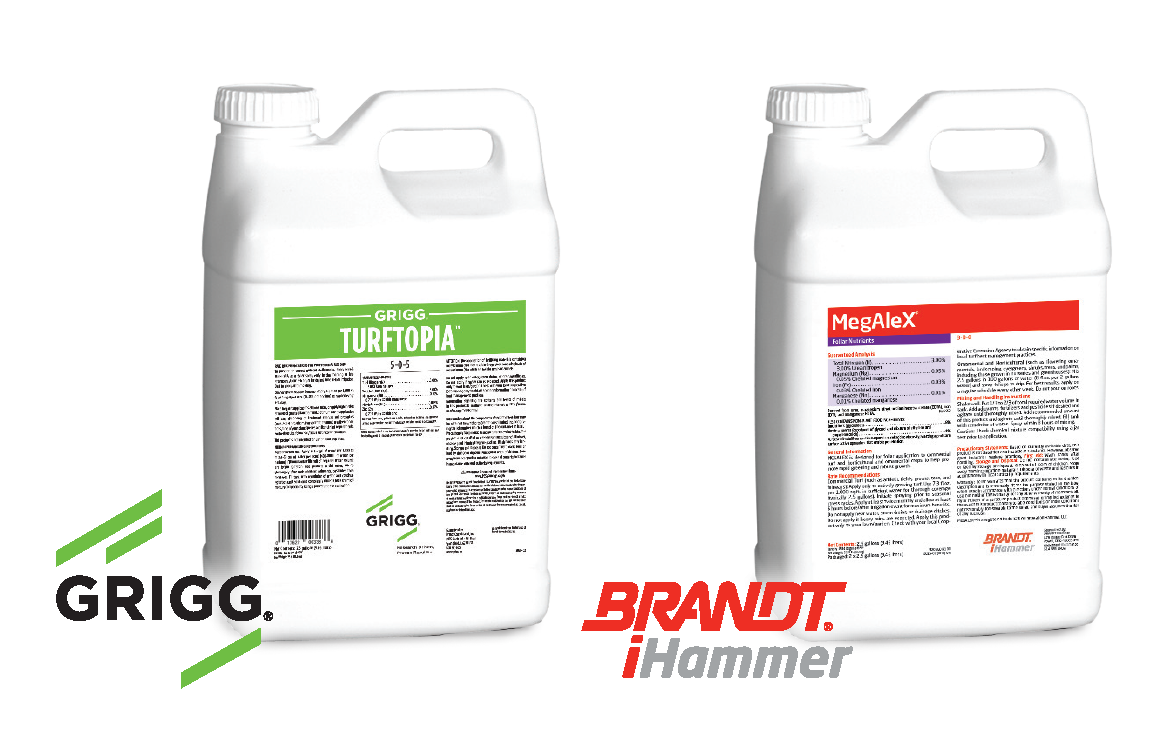
Consider using GRIGG GreenPig Ultra to optimize turf color, quality and aesthetics.
GRIGG GreenPig Ultra is a premium turf pigment that can be used to maintain turf color while turfgrass is under water deficit conditions. GRIGG research has documented an increase in NIR light reflectance from turf treated with GreenPig. We continue to learn how this measurement correlates with decreased oxidative stress.
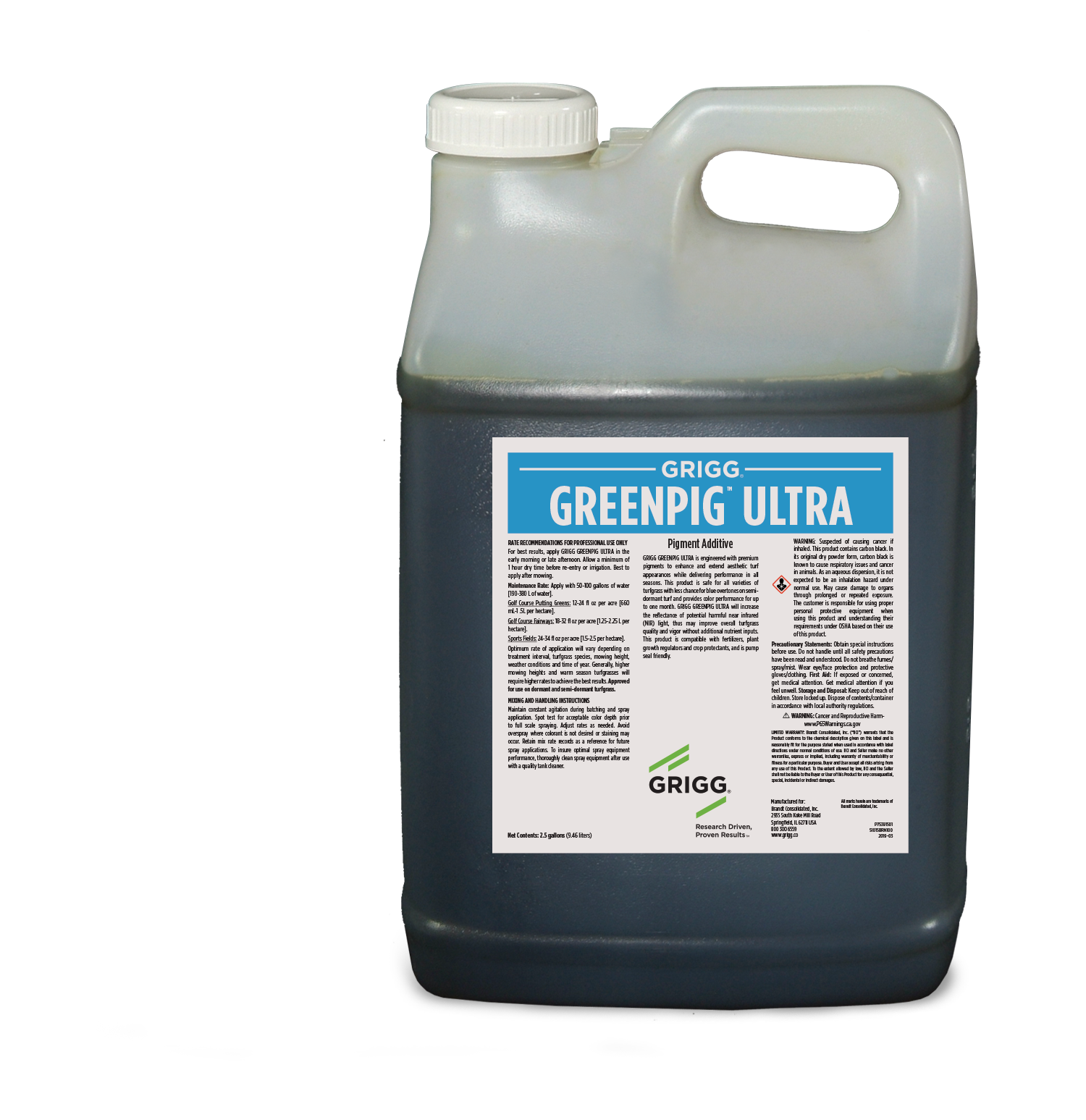
Nutrition
BRANDT iHammer MegAlex
3-0-0
Derived from urea
Recommended for golf greens to give turf extra support from heavy foot traffic and play. Helps build vibrant, high performance turf, encourages root growth and promotes vigor in shade areas.
| Application | Rate |
| Turf | Mix 3 – 9 fl oz per/1000 sq ft in sufficient water for thorough coverage (typically 2.5 gallons). Apply at least twice monthly and allow at least 6 hours before/after irrigation event for maximum benefits. |
GRIGG Turftopia
5-0-5, 0.2% Mn, 0.003% Mo, 0.2% Zn
Derived from urea, potassium citrate, potassium acetate, manganese amino acid complex, sodium molybdate and zinc amino acid complex.
A sophisticated new formulation that helps maintain turf resilience, playability and cellular hydration during environmental stress conditions. Recommended for foliar application.
| Application | Rate |
| Cool or Warm Season Grasse | 3-6 fl oz per 1,000 sq ft or 1-2 gal per acre as needed every 7-14 days. |
Colorants
GRIGG GreenPIG Ultra
This formulation offers the same benefits as GRIGG GreenPIG, but provides a darker green color for up to one month. It is recommended for turf that has lost its color, including dormant turf.
Approved for use on dormant and semi-dormant turfgrass.
| Application | Rate |
| Maintenance Rate | Apply with 50-100 gallons of water |
| Golf Course Putting Greens | 12-24 fl oz per acre |
| Golf Course Fairways | 18-32 fl oz per acre |
| Sports Fields | 24-34 fl oz per acre |
View the Trial
Effect of Nutrition and Elicitor Inputs on the Salinity Tolerance of Annual Bluegrass Maintained as a Golf Course Putting Green
(Baird, UCR) (2020)
| Crop | Annual Bluegrass (Poa annua L.) |
|---|---|
| Application Details | Irrigation Type: In ground Planting Type: From seed (var. reptans; ‘Two Putt’) General Fertility: Adequate to promote growth and vigor Soil Type: 80% sand; 20% peat Plot Size: 4’X6’ Replications: 5 - Randomized Complete Block |
| Treatments | All rates applied every 14 days at /1000 ft2 Treatment 1
|
Purpose
The objective of this trial was to determine the effect of four (4) BRANDT T&O programs, including rotational options, on the salinity, drought and heat tolerance of annual bluegrass (Poa annua L.).
Summary
Preventative programs of BRANDT® or GRIGG® products mixes, including phosphite(s), or rotational programs of GRIGG Turftopia and BRANDT iHammer MegAleX, significantly improved turf color/vigor compared to untreated controls and competitive product programs for most response variables. GRIGG/BRANDT rotational programs I&II ( treatments 3 and 4) provided the best, and most consistent, performance of any treatment in the trial. These results suggest that GRIGG Turftopia and BRANDT iHammer MegAleX should be used to effectively mitigate salinity, drought, heat stress of annual bluegrass when used preventatively. In addition, the programs offer turf managers a competitive edge by providing osmoprotection, upregulating plant defense, increasing nutrient acquisition, and increasing carbohydrate production during photosynthesis.
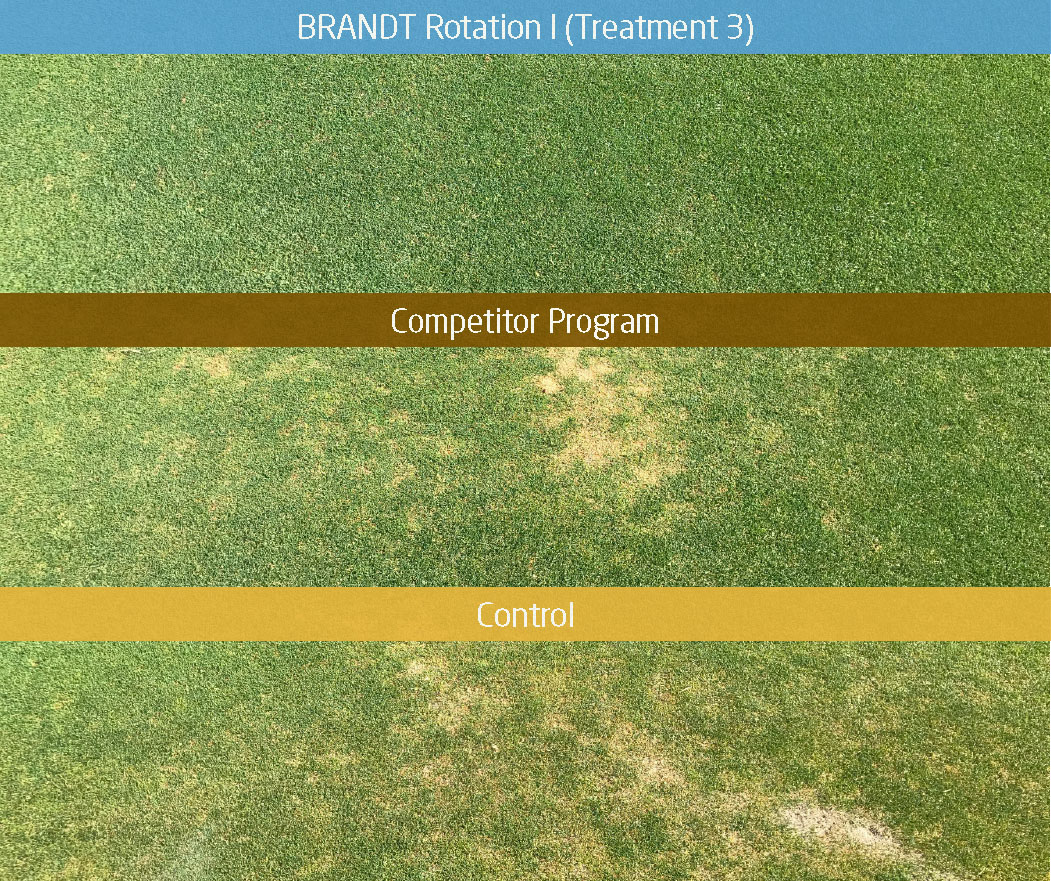
Results and Recommendations
Assessments
- Subjective turfgrass quality (TQ), leaf color, and visual green cover (%DGC) (1-100%) were rated on a visual scale of 1-9 with
9 indicating the best, or as a percentage (%), every 14 days. - Objective Normalized Difference Vegetative Index (NDVI) measurements every 14 days.
- Volumetric Soil Water Content (VWC) and Soil Electrical Conductivity (ECe) every 14 days
- Tissue samples collected at the end of the experiment (5-Nov)
- Rapid blight (Labyrinthula terrestris) disease ratings
Results
- GRIGG/BRANDT rotational program II (treatment 4) provided significantly better color than competitor treatment and untreated on five (5) rating dates during the trial (Figure 1)
- Furthermore, and for objective quality ratings, GRIGG and BRANDT program tank mixes as well as GRIGG/BRANDT rotational programs (treatments 3 and 4) offered higher NDVI ratings compared the untreated control, including 2 significant dates at the end of the trial (Figure 2)
- A significant increase in tissue zinc (Zn) levels for turfgrass treated with the GRIGG/BRANDT rotational programs (treatments 3 and 4) were reported during salinity stress (Figure 3)
- No differences in soil volumetric water or soil EC were reported
- Very little rapid blight disease was reported. Soil EC did not
reach high enough levels
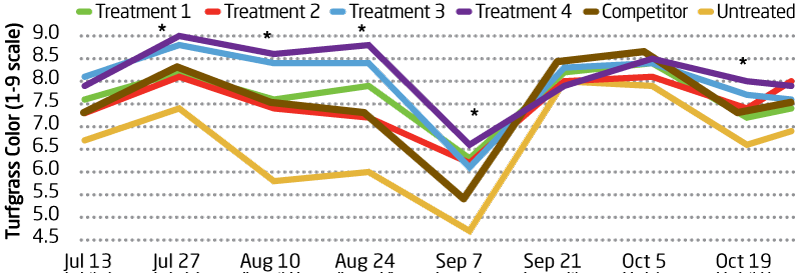
Fig. 1 Effect of Various Treatments overall Poa annua Color During Salinity/Drought/Heat Stress (Baird, UC Riverside) (2020) *Mean separation (P=0.05) for each date.
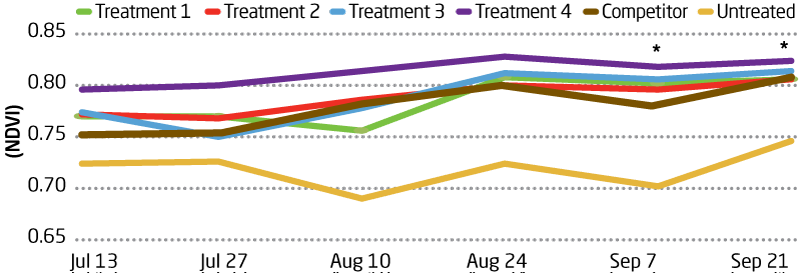
Fig. 2 Effect of Various Treatments overall Poa annua NDVI During Salinity/Drought/Heat Stress (Baird, UC Riverside) (2020) *Mean separation (P=0.05) for each date.
Summary and Recommendations
- Utilize BRANDT or GRIGG products and programs alone, in combination, or in rotation to maximize turfgrass response to drought, heat and salinity.
- GRIGG/BRANDT rotational programs (treatments 3 and 4) demonstrated the most consistent positive effects throughout the study.
- Rotation of GRIGG Turftopia and BRANDT iHammer MegAleX offered the very best results and should be incorporated in to any routine foliar fertilization program for cool season turfgrasses maintained as golf course putting greens as a part of integrated pest management (IPM) strategies.
- Due to a lack of treatment differences on soil chemistry, all reported treatment benefits were physiological – likely from improved osmotic adjustment, reduced oxidative stress, defense activation and improved root growth.
- This work corroborates previous drought stress (2018), defense response (2020), and anthracnose management (2020) work.
- In fact, it’s likely the seaplant extract in both the GRIGG and BRANDT mixes that offered the elevated protection to annual bluegrass from heat, drought, and salinity.
- It’s worth noting that the osmoprotectants and antioxidant in GRIGG Turftopia, rotated with BRANDT iHammer MegAleX responsible for glycoregulation, offered better turf performance in this trial compared to treatments containing phosphite. This indicates that phosphite may not be as important for drought and salinity management as it is for nutritional integrated pest management (IPM) strategies.
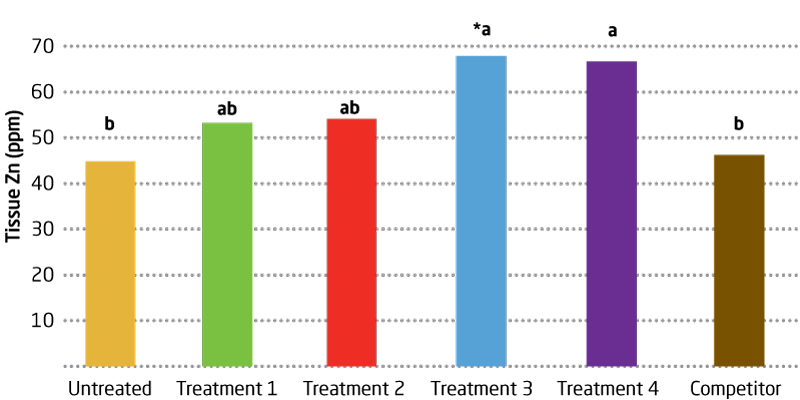
Fig. 3 Effect of Various Treatments on Concentration of Zinc (Zn) in Poa annua Leaf Tissue During Salinity/Drought/Heat Stress (Baird, UC Riverside) (2020). *Mean followed by a different letter are significantly different (P=0.05).
